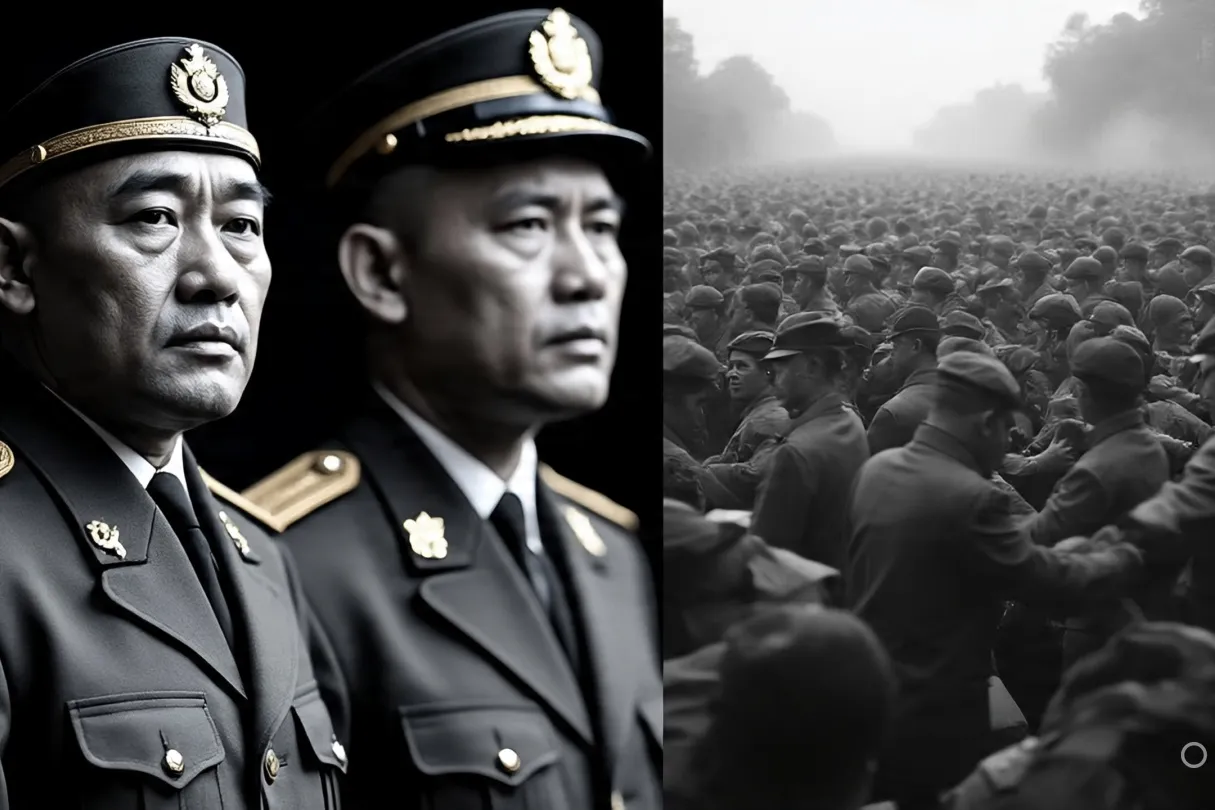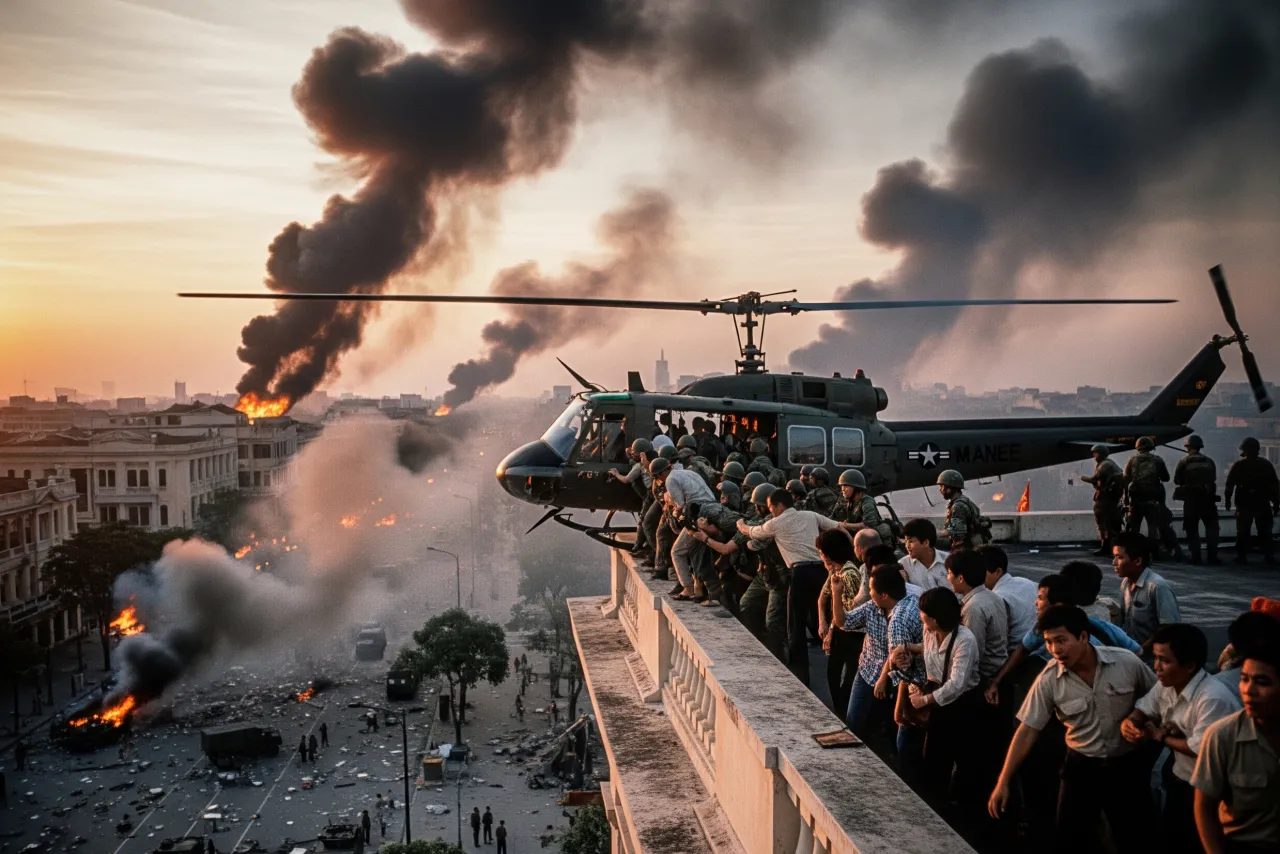The night of September 30, 1965, remains etched in Indonesia’s national consciousness as the beginning of one of its bloodiest and most contested periods.In a swift and brutal operation known as the G30S (Gerakan 30 September – 30th September Movement), a group of military officers kidnapped and murdered six of Indonesia’s top generals.
The murky events of that night served as the catalyst for a brutal anti-communist purge that resulted in the deaths of an estimated 500,000 to over a million people, the vast majority of whom were alleged members or sympathizers of the Partai Komunis Indonesia (PKI), the then-largest communist party outside of the Soviet Union and China.
For decades, the official narrative, propagated by the Suharto regime that rose to power in the aftermath, painted the G30S as a failed communist coup orchestrated by the PKI. However, this version of events has been fiercely contested, giving rise to a multitude of complex and often contradictory theories. Could the G30S have been an internal military affair? Was it a deliberate provocation staged by elements within the military to eliminate the PKI and seize power? Or did foreign powers, particularly the United States, play a hidden hand in engineering the chaos to ensure the demise of a powerful left-wing movement in a crucial Cold War battleground?
This investigative editorial will delve into the shadows of 1965, examining the conflicting narratives and the enduring conspiracy theories surrounding Indonesia’s darkest chapter.
🌑 The Conflicting Narratives: Coup or Pretext?
The immediate aftermath of the G30S saw the emergence of two fundamentally opposed interpretations of the events. Understanding these narratives is crucial to grasping the enduring controversy.
🚩 The Official Narrative: The PKI Coup
The Suharto regime, which consolidated power in the months following the G30S, consistently maintained that the movement was a meticulously planned coup attempt by the PKI. Key elements of this narrative included:
- 🔪 PKI Mastermind: The PKI leadership was portrayed as the intellectual author of the G30S, using disgruntled military officers as their pawns.
- 💥 Seizure of Power: The aim of the G30S was to overthrow the government, assassinate anti-communist generals, and establish a communist state.
- 🐍 Lubang Buaya: The bodies of the murdered generals were found at Lubang Buaya, a remote location near a military training ground. The official narrative depicted PKI-affiliated women torturing the generals before their deaths, a claim that has been widely disputed and used to demonize the PKI.
This narrative served to legitimize the subsequent anti-communist purge, framing it as a necessary act of self-defense against a grave threat to the nation’s ideology and security.
❓ The Conspiracy Theories: A Military or Foreign Plot?
In stark contrast to the official account, various conspiracy theories have emerged over the years, suggesting that the G30S was either orchestrated by elements within the Indonesian military itself or with the involvement of foreign powers.
🪖 Internal Military Maneuvering
This set of theories posits that the G30S was primarily an internal power struggle within the Indonesian military. Several versions exist:
- 🤫 Suharto’s Ambition: Some suggest that then-Major General Suharto, who was not among the kidnapped generals, strategically allowed the G30S to occur or even subtly facilitated it. This allowed him to step into the power vacuum, portray himself as the savior of the nation from the communist threat, and systematically eliminate his rivals within the military.
- ♟️ A Disgruntled Faction: Another theory suggests that a faction of officers, perhaps loyal to President Sukarno and concerned about the growing influence of the PKI or the right-wing military elements, initiated the G30S with limited objectives, such as forcing a political realignment. This faction may have miscalculated, leading to a situation that Suharto was able to exploit.
🇺🇸 Foreign Power Intervention
The role of foreign powers, particularly the United States, has been a persistent element in many conspiracy theories surrounding the G30S.
- 🕵️ CIA Involvement: Given the intense Cold War rivalry and the U.S.’s strong anti-communist stance, theories abound about a foreign intelligence agency actively supporting or even orchestrating the G30S to eliminate the powerful PKI. Certain documents have revealed the extent of foreign interest and involvement in Indonesian politics during this period, including providing financial and material support to anti-communist elements. However, direct evidence of foreign orchestration of the G30S itself remains elusive and highly debated.
- 💰 Strategic Interests: A foreign power had significant strategic and economic interests in Indonesia. The removal of a large communist party and the installation of a more Western-friendly regime would have been a major geopolitical victory. Conspiracy theorists point to the rapid recognition and support Suharto received from Western powers following the purge as further evidence of prior involvement.
🕵️ Digging into the Archives: Seeking the Hidden Truth
Unraveling the truth behind the G30S requires a deep dive into the available historical evidence, acknowledging the limitations and biases inherent in many sources.
📜 Historical Archives: A Patchwork of Perspectives
Access to Indonesian historical archives related to 1965 remains restricted and politically sensitive. However, some documents and accounts have emerged over the years:
- 📄 An Early Analysis: An influential early analysis by scholars suggested that the G30S was primarily an internal military affair, downplaying the PKI’s role as the sole instigator. This paper challenged the official narrative and fueled alternative theories.
- 📁 Declassified Foreign Documents: Declassified documents from other nations reveal their intense interest in Indonesian politics and their awareness of the growing tensions. Some documents show discussions about potential interventions or support for anti-communist forces, but direct orders for staging the G30S are absent.
- 🗣️ Survivor Testimonies: The testimonies of survivors of the 1965 purge offer harrowing accounts of mass arrests, torture, and extrajudicial killings. These personal narratives often contradict the official narrative and highlight the indiscriminate nature of the violence, targeting not just PKI members but also intellectuals, ethnic Chinese, and others deemed “communist” sympathizers.
💰 Suspicious Financial Moves and Diplomatic Meetings
While concrete proof of a foreign-orchestrated plot remains elusive, some circumstantial evidence and observations continue to fuel speculation:
- Rapid Western Recognition: The speed with which certain foreign powers recognized and supported the Suharto regime after the violent takeover has raised eyebrows. This swift acceptance, despite the horrific human rights abuses, suggests to some a pre-existing alignment of interests.
- Financial Support: Reports have surfaced over the years alleging financial support from foreign entities to anti-communist groups and the Indonesian military during this period. While the exact nature and extent of this support remain debated, it adds to the suspicion of foreign influence.
- Diplomatic Activities: The flurry of diplomatic meetings and communications between certain foreign officials and Indonesian military figures in the lead-up to and aftermath of the G30S has been scrutinized for hints of coordination or prior knowledge of the events.
🩸 The Brutality of the Aftermath: A Pretext for Genocide?
Regardless of who orchestrated the G30S, the scale and brutality of the anti-communist purge that followed are undeniable. This raises the critical question of whether the G30S, regardless of its true origins, served as a convenient pretext for the systematic elimination of the PKI.
🔥 The Anti-Communist Fury
In the wake of the G30S, a wave of anti-communist hysteria swept across Indonesia, fueled by military propaganda and religious fervor. The PKI was demonized as a godless enemy of the state, and vigilante groups, often supported by the military, carried out mass killings and arrests.
🎯 The Targeting of the PKI
The purge was systematic and widespread, targeting not just PKI leaders and members but also their families, suspected sympathizers, and even individuals loosely associated with leftist ideologies. The scale of the killings suggests a level of organization and planning that goes beyond spontaneous mob violence.
🕊️ The Silence of the Victims
For decades, the victims of the 1965 purge and their families were silenced by the Suharto regime. Speaking about the events was taboo and often carried severe repercussions. This enforced silence further contributed to the lack of a clear and universally accepted historical understanding of the G30S and its aftermath.
The overwhelming scale of the violence and the systematic targeting of a specific political group lend credence to the argument that the G30S, whether a genuine coup attempt or not, provided the justification for a pre-meditated campaign to annihilate the PKI, a powerful political force that had long been a target of the military and right-wing elements.
🌑 Shadows of the Past: A Legacy of Unresolved Truth
The mystery surrounding the G30S and the subsequent anti-communist purge continues to haunt Indonesia. The conflicting narratives, the limited access to historical archives, and the deep-seated trauma of the events make it difficult to arrive at a definitive conclusion about who was truly behind it all.
While the official narrative of a PKI-led coup has been widely challenged, concrete evidence of a meticulously planned and executed military or foreign-backed conspiracy to stage the G30S remains elusive. However, the circumstantial evidence, the known involvement of foreign powers in Indonesian politics during the Cold War, and the sheer brutality and systematic nature of the anti-communist purge raise serious questions about the full truth of what transpired.
The events of 1965 serve as a stark reminder of the devastating consequences of political violence and the enduring power of historical narratives. As Indonesia continues to grapple with its past, the search for truth and reconciliation remains a crucial endeavor. The ongoing investigation and the persistent questioning of official histories are vital steps in confronting a dark chapter and ensuring that the shadows of 1965 do not continue to obscure the path towards a more just and truthful future. The silence of the victims demands nothing less.




